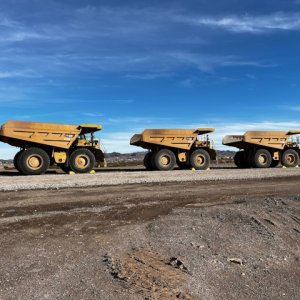The Next Big Challenge for the Mining Industry

STORY INLINE POST
In recent years, we have seen significant efforts by mining companies worldwide to comply with international standards toward more responsible mining. An example is the initiative from the World Gold Council (WGC) that promotes the adoption of the Responsible Gold Mining Principles (RGMP) among its members. While this is a great step forward in the history of the industry, we must not fail to recognize the next big challenge ahead: social performance.
The aim of these standards is, on the one hand, to set out clear expectations for consumers, investors and the downstream gold supply chain as to what constitutes responsible gold mining. On the other hand, like other initiatives, it is meant to provide a framework for mining companies to address and evaluate intangible assets, such as key environmental, social and governance risks and opportunities that could have material impacts on companies' performance, undermining its future value for investors.
In this sense, Environmental, Social and Governance (ESG) factors are becoming a priority for investors to evaluate how a corporation works on behalf of social goals that go beyond the role of a corporation to maximize profits on behalf of the corporation's shareholders.
Considering this, it is worth asking why the adoption and implementation of such principles matters. First, it is important to recognize that social conflicts associated with the mining industry have grown exponentially over the last two decades, mainly in Latin America. For instance, Mexico and Peru are among the countries with the greatest number of social conflicts due to mining projects. Because of this, projects have been delayed or suspended worldwide.
Second, reports about the top risks for the mining industry have shown that, during the last three years, obtaining and maintaining the so-called Social License to Operate (SLO) has been the most significant risk. SLO is a kind of intangible social contract granted by host communities to mining companies. It can be understood as the degree of acceptance, trust, and commitment to collaboration that society, or a community, has at a given time toward an organization. This, is in return, translated into its consent for the development or operation of a specific project.
Finally, there are external and internal conditions that are critical to obtain and maintain the SLO. External conditions include political interests, nationalism over resources and the search for royalties. Internal conditions can be the social competence within a company to manage social risks and impacts, as well as the ability to understand the megatrends driven by socio-environmental issues. These internal conditions are what we refer to as the social performance of a company. That is, the level of success with which a business organization structures its internal governance and the relationship and commitment with its stakeholders, such as the communities around the projects, to obtain and maintain the social license to operate. In other words, the level of social performance of a company is crucial for its success in any country to prevent and avoid social conflicts and by doing so, gain the SLO.
Considering this, the benefit for companies when adopting any of these standards or principles, such as the RGMP, is the opportunity to advance its social performance by means of understanding them as social management tools to prevent social conflicts and gain the SLO. This will allow any company to navigate toward a mining industry that is more compatible with current social expectations. In this sense, an initiative such as the RGMP is not an exercise in compliance; it is about developing and strengthening the social performance of companies to build a culture toward the social with the same determination that the industry has created an entire culture around safety at work. This is all for a single purpose: to prevent and avoid social conflicts that could consequently stop the development of ongoing and new mining projects.
When adopting and implementing these standards, any company will face three major challenges. The first is governance. The company must work to develop its policies and procedures on sustainability to ensure that all areas of the project are aligned to contribute to an adequate social performance. Second, redesign your social team from a community relationship approach to a social performance understanding by developing an integrated and preventive work from planning of the project to its closure in a given territory. Any project modifies existing socio-environmental relations, and this must be acknowledged from day one. Finally, training. All personnel must learn about prevention of social impacts and managing social risks. This training must be a fundamental part of the business in the same way H&S culture is.
Today, current social expectations are conditioning business strategies, thus it is crucial for companies to have a clear and measurable ESG strategy. The coming years will be critical toward shaping the mining of the future, the mining we all want to live. Those companies that manage to read this paradigm shift in the industry, from compliance to performance, will dominate the industry in the coming years.























